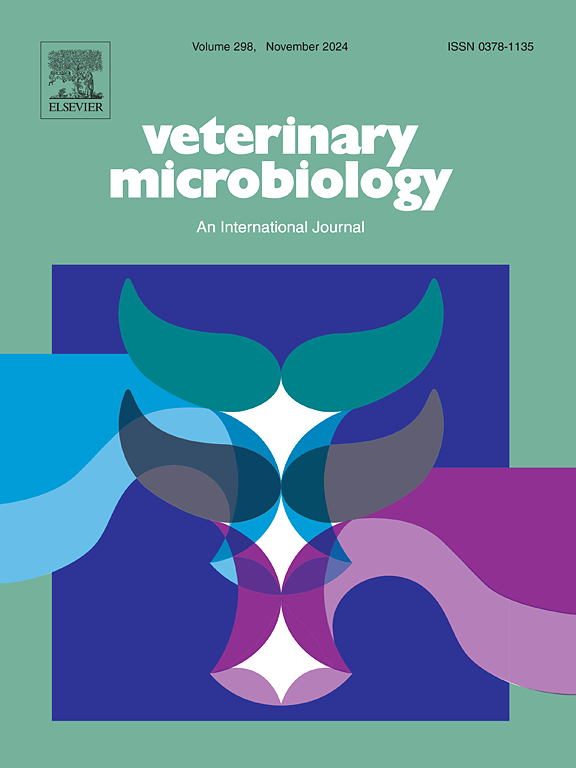Genomic and antimicrobial resistance profiles of Clostridium perfringens isolated from pets in China
IF 2.4
2区 农林科学
Q3 MICROBIOLOGY
引用次数: 0
Abstract
Clostridium perfringens is a notable pathogen causing diarrhea in domestic animals. However, data on this pathogen’s prevalence and genomic characteristics in pets are limited. We collected 300 fecal samples from companion animals across two cities in China and isolated 150 strains for genomic sequencing and antimicrobial susceptibility testing (AST). Our findings showed a high prevalence of two key virulence genes (VGs), pfoA (77.33 %, 116/150) and cpb2 (60.67 %, 91/150). Moreover, for the first time in China, we identified a strain carrying netF. The analysis of AST and genomic antimicrobial resistance genes (ARGs) highlighted the resistance patterns of pet-derived C. perfringens strains in China. Particularly, we observed a high resistance rate to erythromycin, primarily associated with erm(Q), which was found in 88.67 % (133/150) of all isolates. This resistance rate was higher than that reported in previous studies. Genetic context analysis identified a novel plasmid group harboring the erm(Q) gene. In summary, this study revealed the antibiotic resistance and genomic characteristics of C. perfringens strains derived from pets in China, providing a reference for the prevention of related diseases and further research. Notably, these findings underscore the need for continuous monitoring of resistance trends, particularly concerning the spread of erm(Q), to lessen the impact of antimicrobial resistance in veterinary medicine.
求助全文
约1分钟内获得全文
求助全文
来源期刊

Veterinary microbiology
农林科学-兽医学
CiteScore
5.90
自引率
6.10%
发文量
221
审稿时长
52 days
期刊介绍:
Veterinary Microbiology is concerned with microbial (bacterial, fungal, viral) diseases of domesticated vertebrate animals (livestock, companion animals, fur-bearing animals, game, poultry, fish) that supply food, other useful products or companionship. In addition, Microbial diseases of wild animals living in captivity, or as members of the feral fauna will also be considered if the infections are of interest because of their interrelation with humans (zoonoses) and/or domestic animals. Studies of antimicrobial resistance are also included, provided that the results represent a substantial advance in knowledge. Authors are strongly encouraged to read - prior to submission - the Editorials (''Scope or cope'' and ''Scope or cope II'') published previously in the journal. The Editors reserve the right to suggest submission to another journal for those papers which they feel would be more appropriate for consideration by that journal.
Original research papers of high quality and novelty on aspects of control, host response, molecular biology, pathogenesis, prevention, and treatment of microbial diseases of animals are published. Papers dealing primarily with immunology, epidemiology, molecular biology and antiviral or microbial agents will only be considered if they demonstrate a clear impact on a disease. Papers focusing solely on diagnostic techniques (such as another PCR protocol or ELISA) will not be published - focus should be on a microorganism and not on a particular technique. Papers only reporting microbial sequences, transcriptomics data, or proteomics data will not be considered unless the results represent a substantial advance in knowledge.
Drug trial papers will be considered if they have general application or significance. Papers on the identification of microorganisms will also be considered, but detailed taxonomic studies do not fall within the scope of the journal. Case reports will not be published, unless they have general application or contain novel aspects. Papers of geographically limited interest, which repeat what had been established elsewhere will not be considered. The readership of the journal is global.
 求助内容:
求助内容: 应助结果提醒方式:
应助结果提醒方式:


